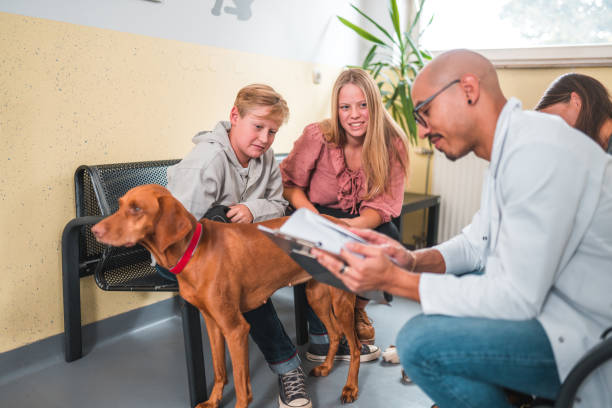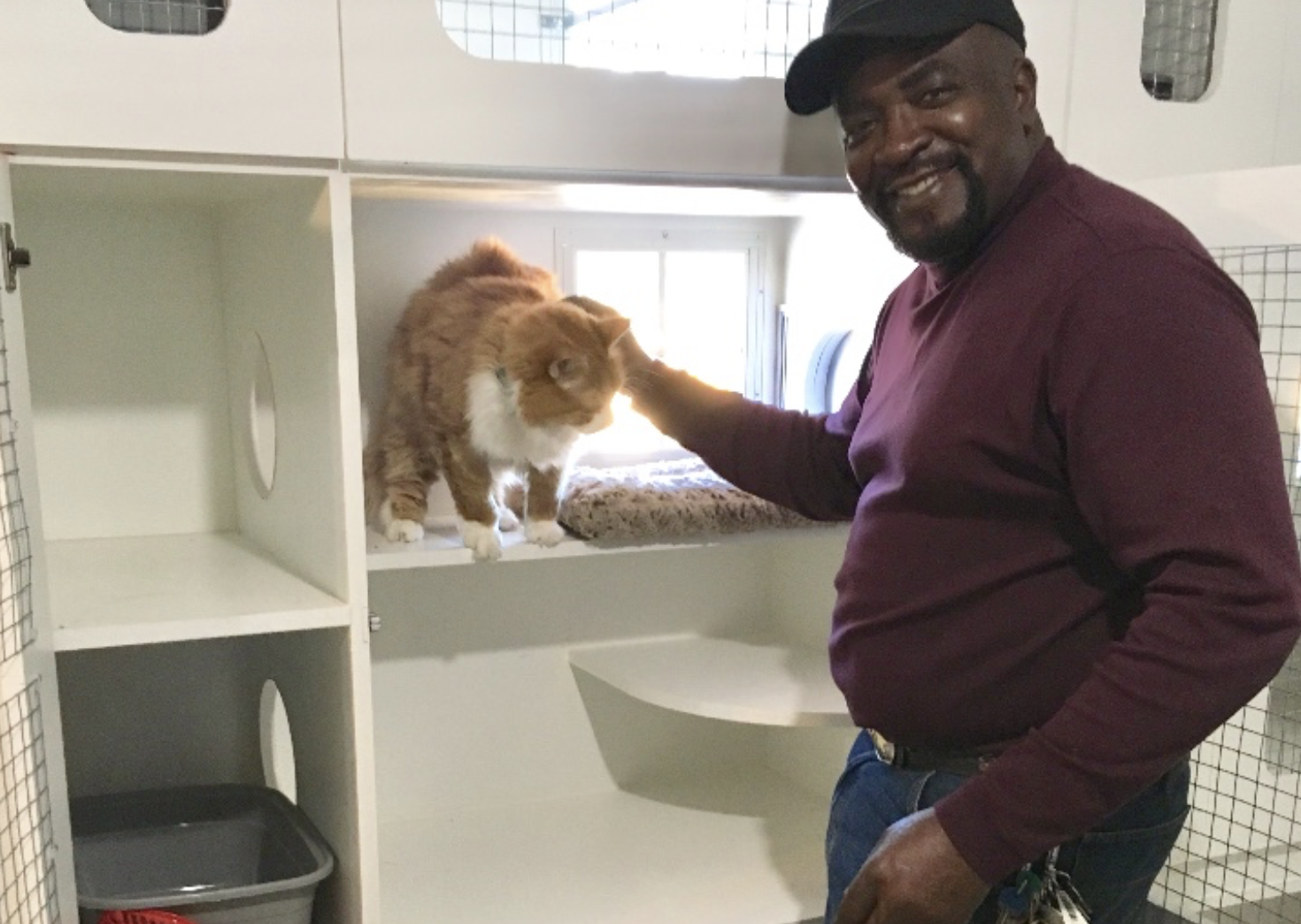You've fine-tuned your training philosophy, developed lesson plans that deliver real results, and helped countless pups become well-mannered members of the pack. Your dog training curriculum? Solid. But here's a question that's just as important: Is your client journey just as buttoned-up?
When prospective clients call, they usually aren't thinking about shaping, chaining, or reinforcement schedules. They're thinking, "I'm in over my head and need help." They may be new puppy parents or dealing with behavioral issues that are overwhelming, even scary, and they don't know what to expect from the process.
They've got questions. They've got nerves. And they're looking to you not just for training, but for clarity, reassurance, and a path forward.
Let's explore how to elevate the human side of dog training by crafting a thoughtful, engaging, and supportive client experience from the first inquiry to the final lesson and beyond.

Step 1: Start With Compassion, Not Curriculum
For many pet parents, reaching out to a trainer is a last resort. They're stressed, embarrassed, or afraid. They might be thinking, "If this doesn't work, I may have to rehome."
We want to keep pups with their families, so your first contact with each pet parent matters so much. Instead of jumping straight into lesson plans or pricing, take time to listen, validate their concerns, and reflect on what you're hearing.
Then, offer an initial consultation by phone or in a calm, controlled setting (e.g., a quiet garden, enclosed courtyard, or indoor room with minimal stimuli). This keeps dogs from escalating and allows you and the client to have a productive conversation.
Use this meeting to:
- Gather a clear history
- Observe the dog's baseline behavior
- Gauge the client's learning style and goals
- Explain your process and expectations
- Decide together whether to proceed
If both parties say yes, you're not just starting a training plan—you're beginning a new relationship.
Step 2: Lay Out a Realistic, Relational Training Plan
Training isn't a transaction. It's a shared journey, and your plan should reflect that.
- Frame it as a partnership. Let your prospective client know this isn't a drop-off-and-fix situation. Success requires their involvement, consistency, and patience.
- Discuss limitations openly. Factors like genetics, trauma history, and home environment will influence progress. You can't change a dog overnight, but you can modify behavior with proper guidance.
- Build in proofing. Teach clients early that skills like recall won't hold up in emergencies until they're proofed under distractions. Position proofing as the next level — a milestone they should be excited to reach.
- Set goals, not just sessions. Give your plan structure (e.g., "Week 1: Focus and attention. Week 2: Basic recall. Week 3: Proofing with mild distractions."). This makes progress visible and keeps clients motivated.
Step 3: Make It Easy to Get Started
How easy is it for a new client to actually sign up for your training services?
If you're fielding DMs on Instagram, juggling phone calls between lessons, or relying on emails that get buried in inboxes, you're making pet parents work too hard—and probably losing leads in the process.
Here's what an easy onboarding experience looks like:
- Clear, concise class descriptions on your website
- Online scheduling and payment, available 24/7
- Instant confirmations and welcome emails
- Digital agreements and waivers to save time and reduce paper clutter
Pet parents are busy. The more seamless and self-service your enrollment process is, the more likely they are to follow through.
Take Portland-based dog and puppy training school, Urban Pawsibilities, for instance. When you visit the company website, you are immediately greeted with several options to begin your training journey, depending on how ready you are as a prospective client. If a pet parent lands on the business's social media, they are directed to a link-in-bio to sign up.
A clear call-to-action to sign up or schedule a discovery call takes the mystery, confusion, and frustration out of booking with your dog-training business and streamlines the process for your staff.
Read the full Urban Pawsibilities customer success story

Step 4: Set Clear Expectations Early
You likely wear many hats as a pet-care business owner and trainer... but you're probably not a mind reader. If your onboarding process doesn't proactively answer questions, new clients may arrive confused, unprepared, or misaligned on what your program entails.
Use the first touchpoint to lay it all out for new clients, including:
- What to bring (treats, clickers, collars)
- What to expect (curriculum, duration, goals)
- What's required (vaccines, age limits, class prerequisites)
Providing this upfront shows professionalism and helps pet parents feel confident that they've chosen the right trainer.
Step 5: Practice Routine Communication
Training is a partnership—not just between you and the dog, but between you and the pet parent. Communication plays a huge role in keeping clients engaged and committed throughout the program.
Make proactive communication a regular habit:
- Reminders before each session
- Progress updates mid-program
- Homework assignments or recap notes
- Reinforcement tips to practice between classes
These touchpoints build trust, reduce no-shows, and keep pet parents motivated to stay the course. Anchor Up K9 Academy, for instance, uses Gingr's daily report cards to send regular updates to training clients to help keep them engaged and in constant contact.
"Gingr has also simplified the process of onboarding new clients, making it easy for them to sign up for training through the academy’s customer portal," Anchor Up Founder DeWayne Cabel said. "I can have new clients click on the customer portal on my website, and they can sign their dog up for training."

Step 6: Keep Pet Parents Engaged
(Just Like You Do With Their Pups)
It's inevitable — pet parents arrive as bright-eyed and bushy-tailed as their pups for a few sessions, and then they stop showing up. Don't take it personally, as clients disengage for all kinds of reasons. Life gets busy, results feel slow, or they weren't prepared for how much effort training requires. But with a little strategy, you can keep them coming back consistently. Try these tips:
Be Likeable and Trustworthy
Being assertive is important in business and in training, but so are soft skills like empathy, leadership, and emotional intelligence. Are you easy to talk to? Do you explain things clearly? Do clients feel seen, heard, and supported? These interpersonal skills are just as vital as your training chops.
Offer Value That Resonates
What motivates this client? Is it:
- A better bond with their dog?
- Off-leash reliability for hiking trips?
- A well-behaved pup that fits seamlessly into family life?
- Safety from reactivity issues or bite risks?
Speak to their individual why. The stronger the emotional connection, the more invested they'll be.
Identify Their Fears, And Address Them Gently
Fear can be a powerful motivator. You're not there to scare clients, but don't shy away from consequences either.
Try: "You mentioned during our first session that you were worried another bite could mean euthanasia. I want to help avoid that, but I've noticed some patterns that are repeating. Can we talk about what's hard for you when crating him when you have guests?"
It's about care, not criticism. If clients are concerned about something else, communicate with them privately to address any potential issues and offer solutions before a minor situation spirals out of control.
Step 7: Celebrate Progress At Every Step
Let's face it: Some clients are gold-star students, and others need a little time. As a trainer, you know every pet is different, and that's OK! Pet parents want to know how things are going regardless, and you can keep them informed and engaged with the following tools:
- Video check-ins: Record a short clip of a key skill before scheduling the next lesson.
- Progress tracking: Use a digital tracker and award charts, badges, or certificates for each milestone.
- Automated nudges: Send weekly reminders or "homework" via text or app.
- Gamify it: Offer certificates, badges, or even social media shoutouts for completing each phase.
Pet parents love seeing their pup improve, but they may not recognize subtle wins unless you show them. Help clients see the transformation by sharing Report Card updates, and notifying them of every "level up." Visualizing progress gives clients a sense of momentum—and a reason to keep showing up.
Remember: inconsistency doesn't mean you're failing, but smart systems can give them the nudge they need.
Step 8: Offer a Post-Training Path
What happens when a training course ends? If your client journey stops at the final lesson, you're missing out on a key opportunity to build long-term loyalty.
Consider offering:
- Graduate classes or advanced workshops
- Drop-in practice or behavior maintenance sessions
- Alumni discounts or referral programs
- Private follow-up consults
- Memberships or packages for additional services
A clear next step helps pet parents continue their journey — and keeps your schedule full with returning clients.
Step 9: Gather Feedback and Grow
Don't forget to build in a tail-end to your client journey!
- Ask for a short survey or testimonial
- Invite pet parents to join your email list or private Facebook group
- Send a thank-you message or graduation card
- Follow up at 3 months to check in
This turns past clients into loyal ambassadors and gives you valuable insight to strengthen your offerings.
Step 10: Track the Full Journey (Not Just the Lesson Plan)
You already track lesson progress. But what about the full client journey? Tracking customer behavior — from bookings and communication to feedback and future visits — helps you spot drop-off points and refine your process. It's not just good business... it's a smarter way to serve your community.
Streamline the Client Journey and Save Time
You've got the skills. You've got the heart. Now, let's make every step of the client journey just as dialed in.
With Gingr, you can:
- Automate onboarding with digital waivers, policies, and forms
- Enable 24/7 self-service bookings and payments
- Track client notes and dog behavior history in one place
- Send automated reminders, report cards, and follow-ups
- Build repeat business with memberships, packages, and class prerequisites
It's everything you need to run your training program like the professional business it is—and give clients an experience they'll rave about. Get started with Gingr today!
Subscribe to the Gingr Blog







